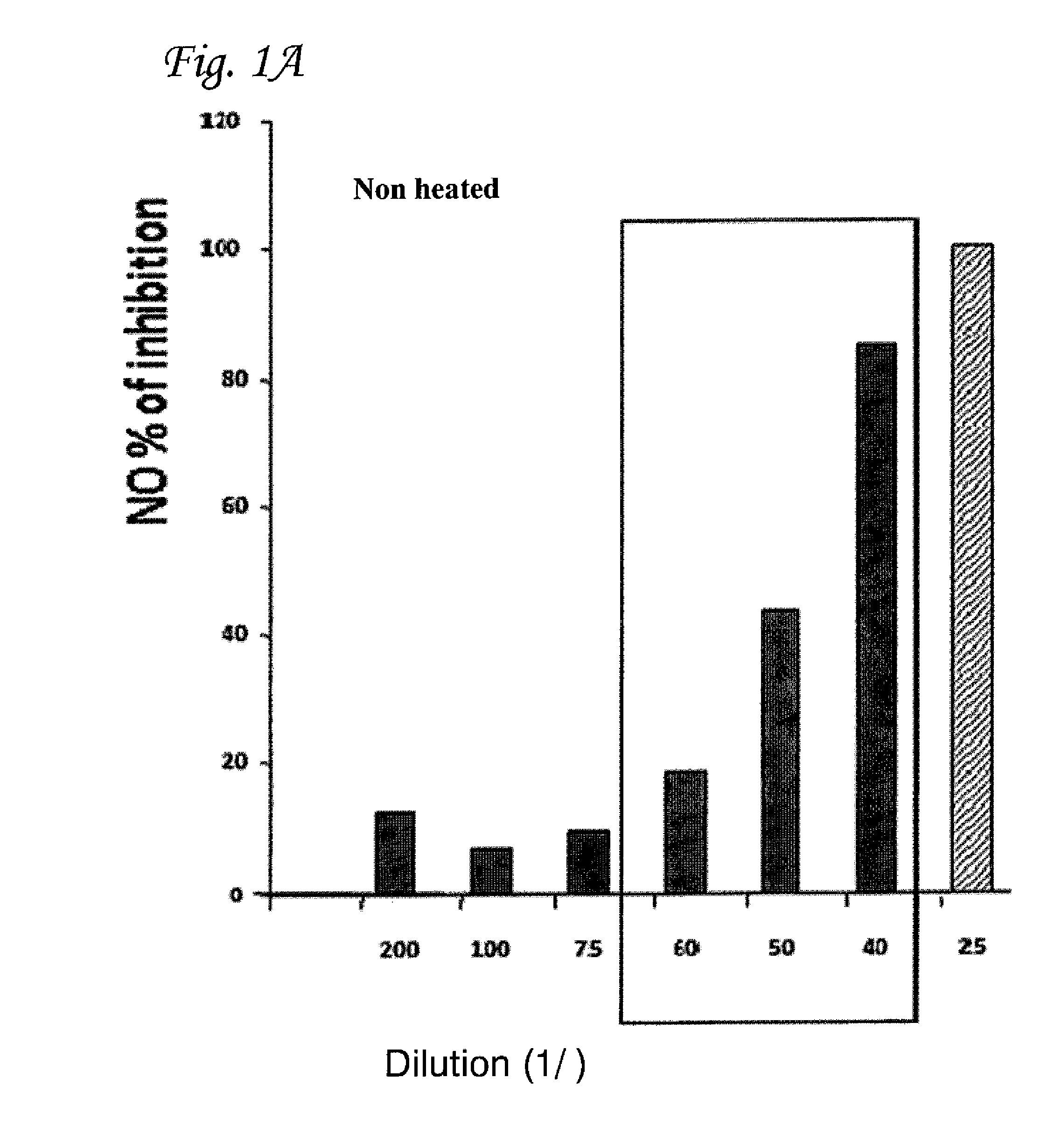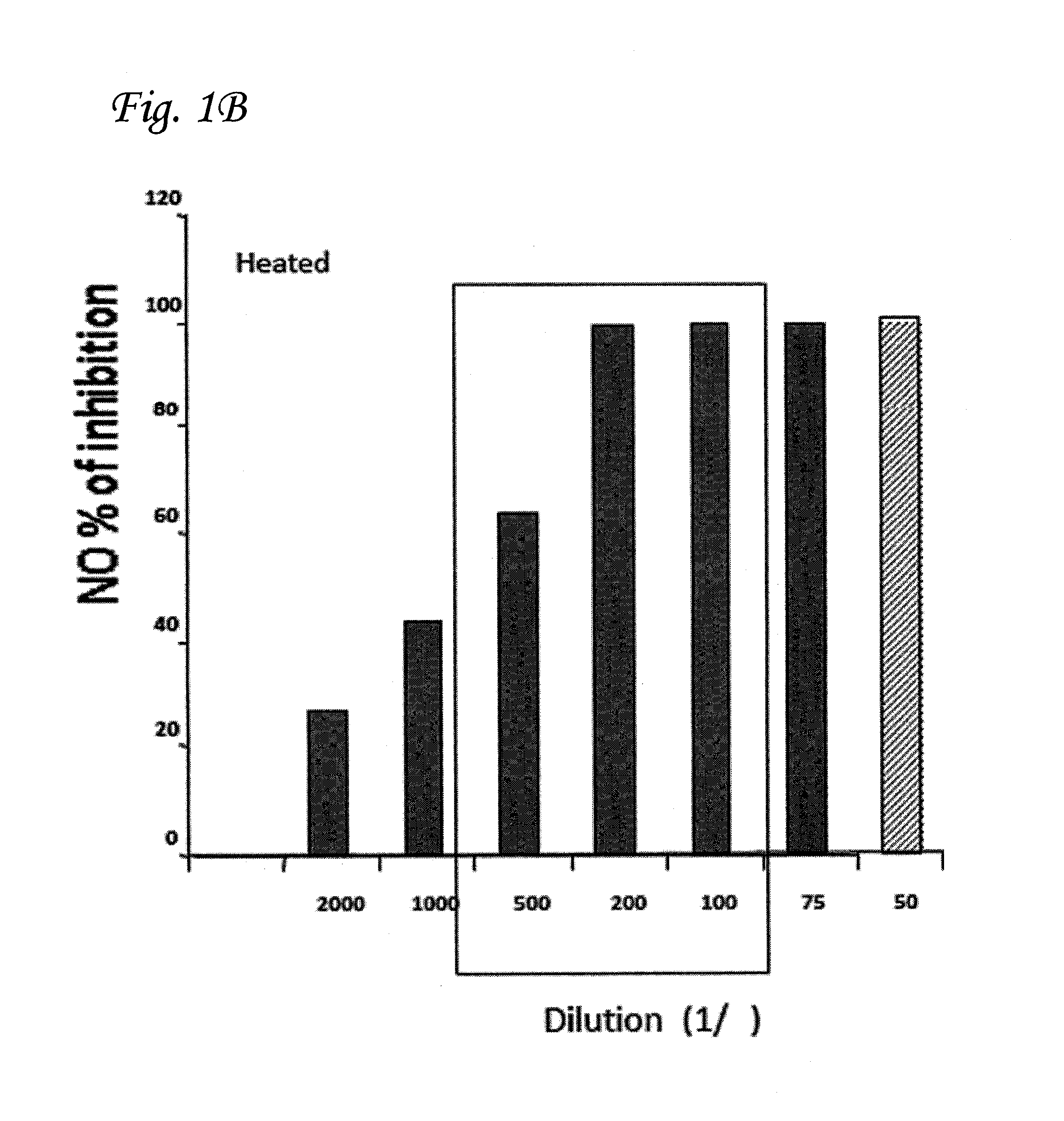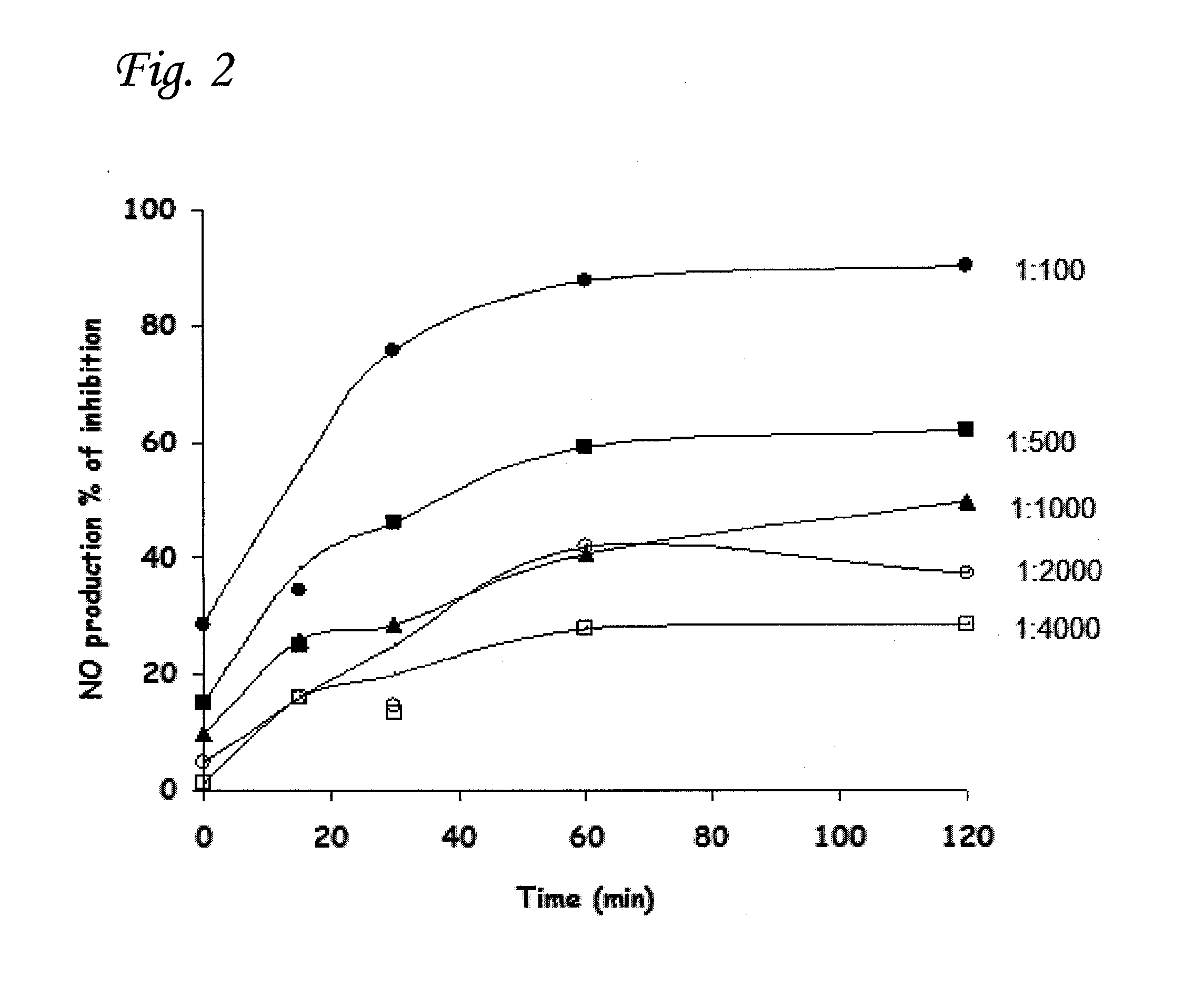Compositions comprising heat-treated clear tomato concentrate
- Summary
- Abstract
- Description
- Claims
- Application Information
AI Technical Summary
Benefits of technology
Problems solved by technology
Method used
Image
Examples
example 1
Inhibition of Production of NO Using Heat-Treated CTC
Methods and Materials
[0079]Macrophage isolation and cell culture—Peritoneal macrophaged were collected from the peritoneal cavity of 6-8 week old male ICR mice (Harlan, Israel) that had been given an intraperitoneal injection of 1.5 ml of thioglycollate broth (4%) 4 days before harvest. Peritoneal macrophages were washed three times with PBS and, if needed, a hypotonic lysis of erythrocytes was performed, yielding 90-95% purity. The macrophages were identified by FACS analysis using FITC-conjugated rate anti-mouse (F4 / 80 (MCA497F) (Serotec, Oxford, England) by flow microfluorimetry on FACS (Becton Dickinson, Mountain View, Calif.). For each sample, 10,000 light scatter-gated viable cells were analyzed. Peritoneal macrophages were cultured in RPMI 1640 medium contained 10% FCS, 2 mM L-glutamine; 100 U / ml penicillin; 100 μg / ml streptomycin (Beit-Haemek, Isreal) in 96-well plates (1×106 cells / well) at 37° C. in 5% CO2 atmosphere. Cel...
example 2
Determination of Optimal Heat-Treatment Conditions
[0088]In order to investigate the length of heating-time needed to produce a maximum increase in anti-inflammatory efficacy, CTC was heated to 90° C. for different time durations before being added to the macrophages. As shown in FIG. 2, 1 h of incubation is sufficient to achieve maximal inhibition of NO production for all of the different CTC dilutions tested.
example 3
Characterization of Heat-Treated CTC
[0089]The concentrations of certain key constituents of heat-treated CTC were determined and compared with the levels of said constituents in regular CTC that has not been subjected to heat treatment.
A) Amino-Acids
[0090]The concentrations of various free amino acids in CTC samples (heated and unheated) were determined using a reverse-phase HPLC method. A Zorbax Eclipse XDB-C8 column was used for the separation of Fmoc derivatizated amino acids, in which an acetate buffer / acetonitrile gradient was used as the mobile phase, at a flow rate of 1.5 ml / min. The eluted components were detected and quantified using a 265 nm UV detector.
[0091]The CTC samples (heated and unheated) were prepared as follows: One gram of CTC was diluted in a 0.2 molar base solution (prepared by dissolving 16.8 g of sodium bicarbonate in one liter of water. 0.5 ml of the diluted CTC was then transferred to a clean vial, to which a 0.5 ml of a standard amino solution was added (...
PUM
| Property | Measurement | Unit |
|---|---|---|
| Fraction | aaaaa | aaaaa |
| Fraction | aaaaa | aaaaa |
| Concentration | aaaaa | aaaaa |
Abstract
Description
Claims
Application Information
 Login to View More
Login to View More - R&D
- Intellectual Property
- Life Sciences
- Materials
- Tech Scout
- Unparalleled Data Quality
- Higher Quality Content
- 60% Fewer Hallucinations
Browse by: Latest US Patents, China's latest patents, Technical Efficacy Thesaurus, Application Domain, Technology Topic, Popular Technical Reports.
© 2025 PatSnap. All rights reserved.Legal|Privacy policy|Modern Slavery Act Transparency Statement|Sitemap|About US| Contact US: help@patsnap.com



